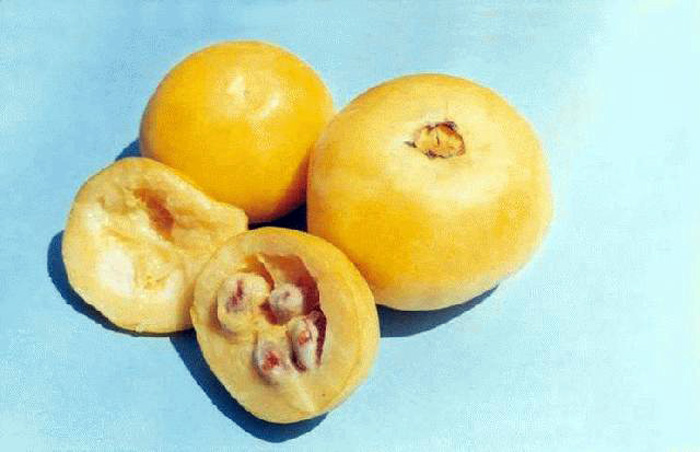Lutein is a carotenoid, a natural dye present in certain fruits, vegetables and sea animals such as crustaceans. It is an orange, red and yellow compound. Macula, is the zone of the retina that makes vision clear and detailed; this zone degenerates due to damage in the blood vessels that supply it.
For the study, azara was used due to its intense yellow color, indicator of a high concentration of this substance. "Carotenoid profiles have not been studied before and we did it by means of a joined project between both universities, "explained the professor and Ph.D in Food Chemistry Gloria Astrid Garzón Monrroy, professor of this subject in the Chemistry Department of Universidad Nacional de Colombia.
"We found that this fruit has big concentration of lutein (489 micrograms per each 100 grams of fresh fruit). This is unusual since lutein is found, mainly, in vegetables with green leaves and rarely in these types of fruits," asserted Garzón.
The methodologies used to determine lutein levels were liquid chromatography and mass spectrometry. The first separates the components and allows measuring its concentration. Once carotenoids are separated, it is possible to examine which are present and which are majority. The second process allows identifying each of the components and their respective characteristics based on their molecular weight.
Currently, lutein is extracted from calendula flower and is used to fortify food. Green vegetables also contain this substance. Now, azara emerges as an alternative that can be consumed in different ways.
Azara tree, originated in the Amazons, belong to the family of Myrtaceae. The variety analyzed in this study is Colombian, but it is also present in Peruvian territories. This fruit is scientifically known as Eugenia stipitaca McVaugh.
The study, initiated this year, also counted on the participation of professors Carlos Narváez, Javier Rincón from the Group of Food and Neutraceuticals, and professor Patricia Restrepo with her Study Group of Chemical and Biochemical Changes in Fresh and processed Food, which are investigating the antioxidant activity of azara in its different stages of ripening. The study is 50% completed and it is expected to be concluded by the middle of next year.
 Correo Electrónico
Correo Electrónico
 DNINFOA - SIA
DNINFOA - SIA
 Bibliotecas
Bibliotecas
 Convocatorias
Convocatorias
 Identidad UNAL
Identidad UNAL





